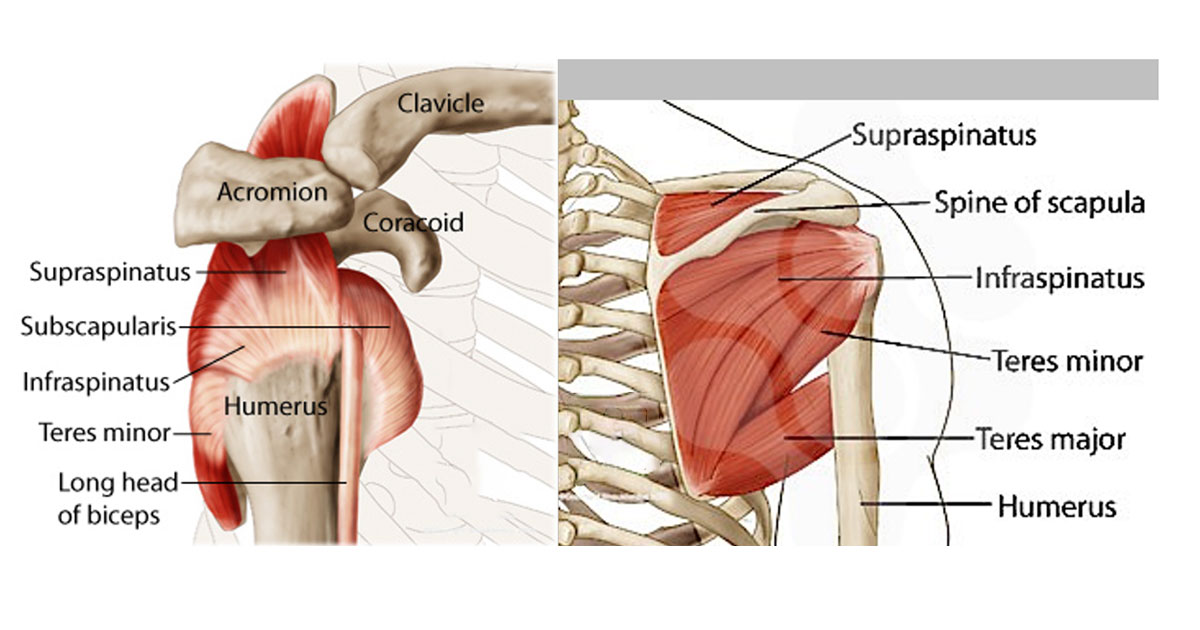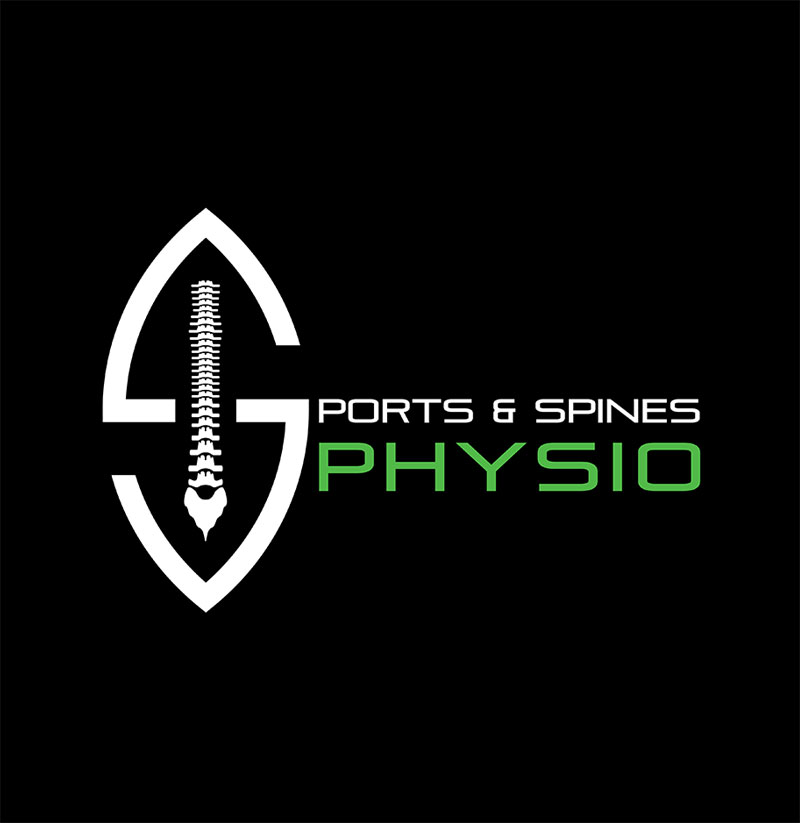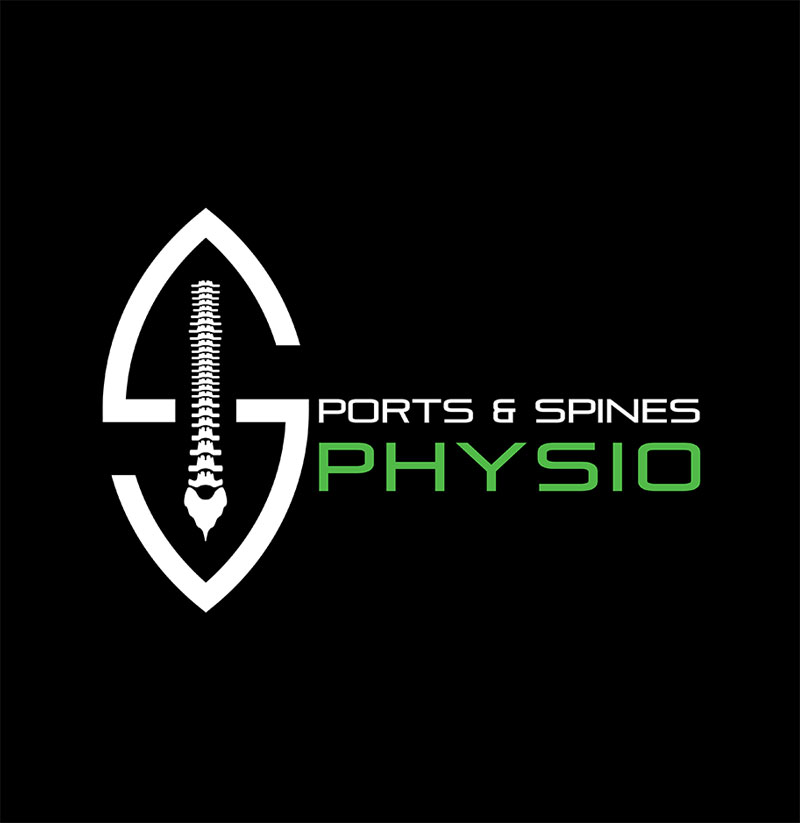
Rotator Cuff Injuries and Shoulder Bursitis
Each year 1 in 50 adults will seek care for new onset of shoulder pain. Without tailored and evidence-based treatment, 40-50% of shoulder pain cases will continue to have pain after 6-12 months. While there are a lot of structures in the shoulder that may cause pain the rotator cuff is the most affected structure and plays a part in around 80% of shoulder pain cases.
What is the rotator cuff?
The rotator cuff is a group of four muscles and their tendons at the shoulder joint. The muscles attach to the shoulder blade (scapula)and the tendons form a cuff around the head of the upper arm bone (the humerus). They keep the shoulder stable and help it move, providing dynamic stability.
The rotator cuff muscles are:
- Supraspinatus
- Infraspinatus
- Teres minor
- Subscapularis
Rotator cuff injury can range from simple inflammation to tears of the muscles or tendons. There are a number of terms describing rotator cuff injury including: rotator cuff syndrome, rotator cuff tear, rotator cuff tendonitis, rotator cuff tendinopathy and shoulder impingement syndrome. Sub-acromial bursitis may also be a result of rotator cuff dysfunction.
What are the symptoms of a rotator cuff injury?
Symptoms of rotator cuff injury can include:
- pain and tenderness in the shoulder
- weakness of the shoulder
- pain when sleeping on the affected side
- referred pain down the arm
- a decrease in movement
What are rotator cuff tears?
Rotator cuff tears can occur from traumatic injuries such as a fall but are also very common as we get older due to normal degenerative changes. Around 25% of people over 65 will have a rotator cuff tear and this increases to 50% at 80 years old. Importantly, not everyone with a rotator cuff tear will experience pain. In most cases, slow degenerative tears allow the body time to adapt and compensate for the injured muscle which can lead to a tear being present with no pain or functional restrictions. Even in cases where these tears become painful, exercise and strength training usually lead to very good outcomes. In the case of younger patients with acute or traumatic tears to the rotator cuff a surgical opinion is usually suggested.
What is rotator cuff tendinopathy?
Tendinopathy refers to pain and/or structural changes within a tendon and often occurs due to an increase in load on the tendon. The supraspinatus tendon and long head of biceps tendon are the two most commonly affected tendons in the shoulder. Load management is very important when trying to settle down an angry tendon. It’s important to note while tendons don’t like being overloaded they also don’t like complete rest as this can lead to a further decline in the tendons load tolerance. Once pain is controlled the aim is to increase the load tolerance of both the tendon and the muscle it attaches to, to prevent pain from recurring.
What is shoulder bursitis?
A bursa is a fluid filled sac that reduces friction between tendons and their surrounding structures. Bursitis is inflammation of the bursa which occurs when the bursa becomes irritated. Due to the rotator cuff tendons and subacromial bursa sitting so close to one another, an issue in the rotator cuff tendon is likely to cause inflammation of the bursa. While bursitis can be painful, due to this close relationship it is rarely the cause of the problem, rather a symptom of something else going on in the shoulder.
Sub acromial shoulder pain can result from overuse or injury to the rotator cuff muscles and their tendons. Overuse often occurs when the load placed on the muscles increases rapidly and the body doesn’t have adequate time to adapt to the change. Importantly, psychological factors such as stress can also contribute to the pain experience and due to this working with a physiotherapist to reduce pain and find ways to increase movement in safe and tolerable ways can be crucial for a fast recovery.
Do I need to get a scan?
In most cases of shoulder pain, imaging results are unlikely to change initial management. Imaging is unlikely to be needed unless
- a traumatic injury has occurred
- pain has persisted despite treatment for a period of 3 months
- there is a severe loss of strength
- a fracture is suspected
As previously mentioned, rotator cuff tears and other abnormalities in the shoulder will not always cause pain. Around 90% of people with no shoulder pain will have a finding on a scan that is considered abnormal. This may include tears, arthritis, bursitis, labral changes or tendinopathies. For this reason, if something is found on a scan this does not necessarily mean it is the source of your pain.
Physiotherapy vs Surgery for rotator cuff tear or tendonitis?
Rotator Cuff Tear
For degenerative tears that haven’t been caused by a single injury, physiotherapy lead strength training leads to outcomes as good, if not better than a surgical repair. Consistent progressive strength training can help people avoid surgery in 75% of cases. Unfortunately a rotator cuff repair will not stop the natural progression of a degenerative rotator cuff and retear can occur. If pain is well controlled in the first 12 weeks with consistent and progressive exercises it is very unlikely surgery will be needed in the future.
Rotator Cuff Tendinopathy
Similarly research has shown there is no difference in outcomes at both 5 and 10 year follow up between a decompression surgery or non-surgical management for rotator cuff tendinopathy and surgery is not recommended for tendinopathy patients.
How does exercise and strength training help shoulder bursitis without a surgical repair?
With progressive strength training we can improve the rotator cuffs and shoulder joints ability to tolerate load. The rotator cuff tendons need to be able to store and release energy and deal with compressive loads. Increasing the capacity of the tendons and muscles to tolerate an increased load will allow you to manage your day to day task or sport without pain. Furthermore, strengthening the surrounding muscle will allow your body to compensate for the injury and reduce your risk of pain recurring. Working with a physiotherapist will allow you to start exercising in a safe and controlled setting and their guidance will get you back on track as quickly as possible.

